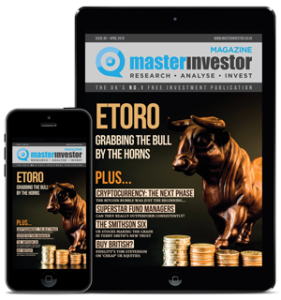A golden time to invest in Vietnam

One of the few bright spots amidst the global economic slowdown is Vietnam, which appears to be in a remarkably strong position. Last year its economy grew by an impressive 7.1%, helped by substantial Foreign Direct Investment, a stable currency and modest inflation of just 3%.
If the local economy continues to thrive it should ultimately result in excellent shareholder returns, although there is bound to be a lot of volatility along the way. Experienced investors who are comfortable with this might want to take advantage by opening a long-term position in the VinaCapital Vietnam Opportunity Fund (LON:VOF).
This £730m London-listed investment trust provides exposure to the Vietnamese stock market through a combination of quoted securities (69.5% of net assets), private equity (12.6%) and unlisted OTC equities (16.2%), with the balance made up of operating assets.
Vietnamese stock market has developed rapidly in recent years
| Master Investor Magazine
Never miss an issue of Master Investor Magazine – sign-up now for free! |
The Vietnamese stock market has developed rapidly in recent years as a result of the relaxation of Foreign Ownership Limits and the government’s privatisation programme. It now has a market value of around $160bn and there is a chance that the country could be promoted to the MSCI Emerging Markets Index at some point within the next few years, which would attract a massive inflow of new capital.
According to the country specialists Dragon Capital, at 21st March the Vietnamese market was trading on a multiple of 14.5 times historic earnings, falling to 13 times 2019 forecast earnings, with expected earnings growth of 12%. The analysts at Numis believe that this is an attractive valuation, especially as VOF shares are available on a 16% discount to Net Asset Value (NAV) despite having an active buyback programme and an enhanced marketing campaign that is designed to increase awareness of the fund.
There is no doubt, however, that this type of product will always be extremely volatile. In 2017 the local stock market rose by 52.7% and followed it up by a further gain of 19.4% in the first quarter of 2018, but fears of an escalation of the US/China trade war and the risk of an Emerging Market currency crisis resulted in a fall of 9.5% during the year as a whole.
Active privatisation programme
There was an active privatisation programme in the first half of 2018, during which the fund managers participated in a number of new issues, although they retained a strong valuation discipline and avoided several high profile IPOs. Activity was markedly slower in the subsequent six months due to weaker investor sentiment.
The managers also aim to take advantage of the private equity market as well as other privately negotiated investments. Last year’s stock market weakness increased the opportunities in this area as more companies and entrepreneurs had to look elsewhere for the capital they needed to enable their businesses to grow. As a result of this the fund is currently looking at around 20 possible deals.
In 2017 VOF adopted a new dividend policy of paying 1% of NAV twice each year and because of the large discount this means that the shares have a prospective yield of 2.5%. The main downside of the fund is that it is very expensive with an annual management fee of 1.5% of net assets and total ongoing charges of 2.39%.

Comments (0)